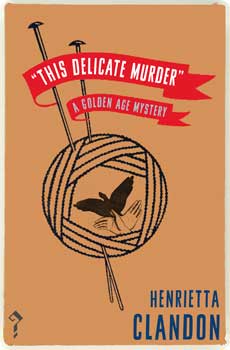A review of The Essex Murders by Vernon Loder – 240328
After reading some of John Vahey’s books under his nom de plume of Henrietta Clandon, I decided to sample some of his novels written under his more familiar pseudonym, Vernon Loder. The Essex Murders, known by the alternative title of The Death Pool, was originally published in 1930 and is the first, albeit of only two, in his Inspector Brews series.
The Inspector is a likeable, empathetic investigator with a smile on his face, one who is, if not happy, prepared to put up with the involvement of a couple of amateur sleuths whom, to his credit, he acknowledges as giving him the clue that eventually leads to the resolution of a crime committed in the soggy fenlands of Essex. One of the amateurs, Ned Hope, has more than a little skin in the game as he has just purchased, using up all his financial resources, the dilapidated Fen Court, set in the middle of nowhere, only to find, to his horror, that three bodies have been fished out of one of the four ponds at the bottom of his garden. His fiancée, Nancy Johnson, provides the unobtrusive love interest and keeps Ned, prone to flights of fancy, firmly on terra firma.
The victims are a wealthy man by the name of Habershon and his wards, two cousins who plan to get married against his wishes. The two youngsters have their wrists tied to each other and there is a fragment of a note pinned to the girl’s clothing suggesting their intention to commit suicide. The initial working theory is that they did away with themselves and that Habershon rushing to the scene too late to prevent the tragedy, slipped, hit his head and drowned in the pool. The watches of the dead men stopped within four minutes of each other.
However, as the case is investigated, it is clear that the facts, not least the position of Habershon’s abandoned car, do not support the suicide theory, but if it is murder, was Habershon the culprit but had an accident before he could leave the scene or was someone else responsible for a triple murder and how was it accomplished?
Among the pertinent clues that emerge are a thermos containing Brazilian coffee laced with a sedative, a punt that was taken without permission, marks on the river bank, and the curious behaviour of Cornelius Hench, Ned’s nearest neighbour, who claims to be something of an ornithological expert but who confuses a kestrel for a hen-harrier. Hench has an almost too perfect alibi and does not seem physically strong enough to have hauled the bodies from the punt into the pond.
The interaction between Ned and Brews is one of the highlights of the book. Whenever Ned seems to have made some headway in his investigations, he finds that Brews with his annoying routine is normally one step ahead of him. However, his observations about the lights of the abandoned car being on which must have made it observable at the time of the murders and throws doubt on the account of one of the characters enables Brews to make sense of what happened.
With very few characters in the story, let alone credible suspects, Loder does a fine job in maintaining the tension and spinning out the resolution of the mystery, but simply because of the paucity of characters he has to pull off an astonishing piece of legerdemain to bring in two more suspects in at the death. Armchair sleuths might throw their book down in disgust that the author has not played fair, and indeed he has not, and the plot does suddenly veer to one of the appropriation of bearer bonds and the opportunity for a couple, not previously thought to have any relation with each other, to make money beyond their wildest dreams and a fresh start. It does challenge the preconception that just because someone is an x – insert profession or rank as appropriate – they cannot have committed murder.
The pace of the ending, in which both Ned and Brews manage to have their heads bashed in, makes up for the rather slow, ponderous start. Once the book gets going it is an entertaining read with some fascinating characters and a plot that never lull the reader into complacency. For Ned, at least the murders are the making of him financially and bring him a wife.
The moral of the story is never develop lumbago out of the blue.




